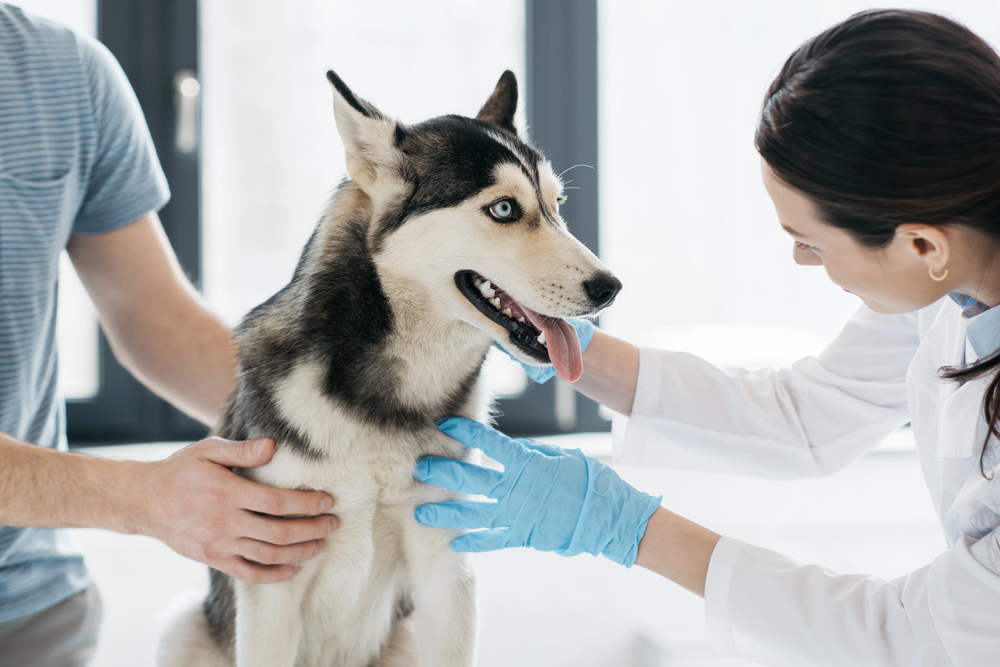
Introduction
Hypoplasia is a developmental condition observed in both dogs and cats, characterized by incomplete or underdeveloped growth of tissues or organs. This condition can impact various parts of the body, including teeth, bones, and internal organs, leading to a range of health issues. Understanding the causes, diagnosis, and treatment options for hypoplasia is crucial for ensuring the well-being of affected pets.
Types of Hypoplasia
1. Dental Hypoplasia
Dental hypoplasia, also known as enamel hypoplasia, occurs when the enamel—the hard outer layer of teeth—fails to develop properly. This can result in teeth that are discolored, pitted, or prone to decay.
Causes: Genetic factors, nutritional deficiencies, or systemic illnesses during the developmental phase of the pet are common causes. Certain breeds may have a genetic predisposition to dental issues, while malnutrition in puppies or kittens can exacerbate the condition.
Symptoms: Difficulty eating, bad breath, visible defects in teeth, and increased susceptibility to dental decay and infections are common symptoms.
Diagnosis and Treatment: Diagnosis is typically made through a veterinary examination and dental X- rays. Treatment may involve professional dental cleanings, fluoride treatments, and extractions in severe cases. Addressing nutritional deficiencies and maintaining good dental hygiene are also essential.
2. Bone Hypoplasia
Bone hypoplasia is characterized by underdeveloped or incomplete bone growth. This can lead to stunted growth or skeletal deformities.
Causes: Genetic disorders like osteogenesis imperfecta, nutritional imbalances (e.g., calcium or phosphorus deficiencies), or viral infections during critical developmental stages can cause bone hypoplasia.
Symptoms: Symptoms may include limping, difficulty moving, or visible bone deformities. Pets might also show signs of pain, especially during physical activities.
Diagnosis and Treatment: Diagnosis involves radiographic imaging, blood tests, and physical examination. Treatment options vary but may include dietary changes, supplements, or surgical intervention for severe deformities.
3. Organ Hypoplasia
Organ hypoplasia occurs when an organ fails to develop to its normal size or functionality, affecting organs like the kidneys, liver, or heart.
Causes: This condition can be congenital, resulting from genetic mutations or developmental issues in utero. It may also be secondary to infections or toxins affecting organ development.
Symptoms: Symptoms vary depending on the affected organ and may include changes in urination patterns, jaundice, or heart murmurs. Pets may exhibit general signs of illness or discomfort.
Diagnosis and Treatment: Diagnosis is typically achieved through imaging techniques (ultrasound, X- rays), blood tests, and sometimes biopsies. Treatment focuses on managing symptoms and may include medication, dietary adjustments, or surgical interventions.
Genetic and Environmental Factors
Hypoplasia can arise from both genetic and environmental factors. Inbreeding in certain dog breeds can increase the likelihood of genetic disorders leading to hypoplasia, while poor nutrition or exposure to toxins can also contribute to the condition.

Diagnosis
Accurate diagnosis of hypoplasia involves:
- Imaging: Techniques like X-rays, ultrasound, or MRI to visualize developmental anomalies.
- Laboratory Tests: Blood tests, urinalysis, and sometimes tissue biopsies to assess overall health and organ functionality.
- Genetic Testing: For suspected hereditary cases, genetic testing can identify specific mutations associated with hypoplasia.
Treatment and Management
Treatment depends on the type and severity of hypoplasia:
- Dental Hypoplasia: Treatment includes dental cleanings, fluoride applications, and possible extractions. Good oral hygiene is crucial.
- Bone Hypoplasia: Management includes dietary adjustments, supplements, and physical therapy. Surgery may be needed for severe cases.
- Organ Hypoplasia: Treatment varies widely based on the organ involved and may include medications, dietary changes, and surgical options.
Prognosis
The prognosis for pets with hypoplasia depends on the condition’s type, severity, and management. Early diagnosis and appropriate treatment can significantly improve the quality of life. Some conditions may be manageable with ongoing care, while others may have a more guarded prognosis.
Prevention
Preventing hypoplasia involves:
- Genetic Screening: Responsible breeding practices and genetic screening to reduce inherited forms of hypoplasia.
- Nutrition: Providing a balanced diet during developmental stages.
- Healthcare: Regular veterinary check-ups to identify and manage early signs of developmental issues.
FAQs about Hypoplasia in Dogs and Cats
1. What are the most common types of hypoplasia in pets?
The most common types include dental hypoplasia (incomplete enamel development), bone hypoplasia (underdeveloped bones), and organ hypoplasia (underdeveloped organs).
2. How is dental hypoplasia diagnosed in pets?
Dental hypoplasia is diagnosed through a veterinary examination and dental X-rays. The vet will assess the condition of the teeth and look for signs of enamel defects.
3. Can hypoplasia be inherited in pets?
Yes, some forms of hypoplasia, such as certain types of dental and bone hypoplasia, can be inherited. Responsible breeding practices and genetic testing can help reduce the risk.
4. What are the treatment options for bone hypoplasia?
Treatment for bone hypoplasia may include dietary adjustments, calcium and phosphorus supplements, physical therapy, and possibly surgical intervention for severe deformities.
5. Are there any preventive measures for organ hypoplasia?
Preventive measures for organ hypoplasia include ensuring proper prenatal care for pregnant pets, avoiding exposure to toxins, and addressing any nutritional deficiencies during development.
6. How can I support my pet if they have hypoplasia?
Supporting a pet with hypoplasia involves regular veterinary check-ups, following the prescribed treatment plan, and making lifestyle adjustments as recommended by your vet. For dental issues, maintaining good oral hygiene is essential.
7. What is the long-term outlook for pets with hypoplasia?
The long-term outlook depends on the specific type and severity of hypoplasia. Early diagnosis and treatment can improve the quality of life and help manage symptoms effectively. Some conditions may require ongoing care and monitoring.
Conclusion
Hypoplasia in dogs and cats can affect various body parts, leading to significant health challenges. By understanding the types, causes, and treatments of hypoplasia, pet owners can better manage their pets’ health and improve their quality of life. Regular veterinary visits, early diagnosis, and appropriate treatment are key to supporting pets with this condition and ensuring they lead happy, healthy lives.
